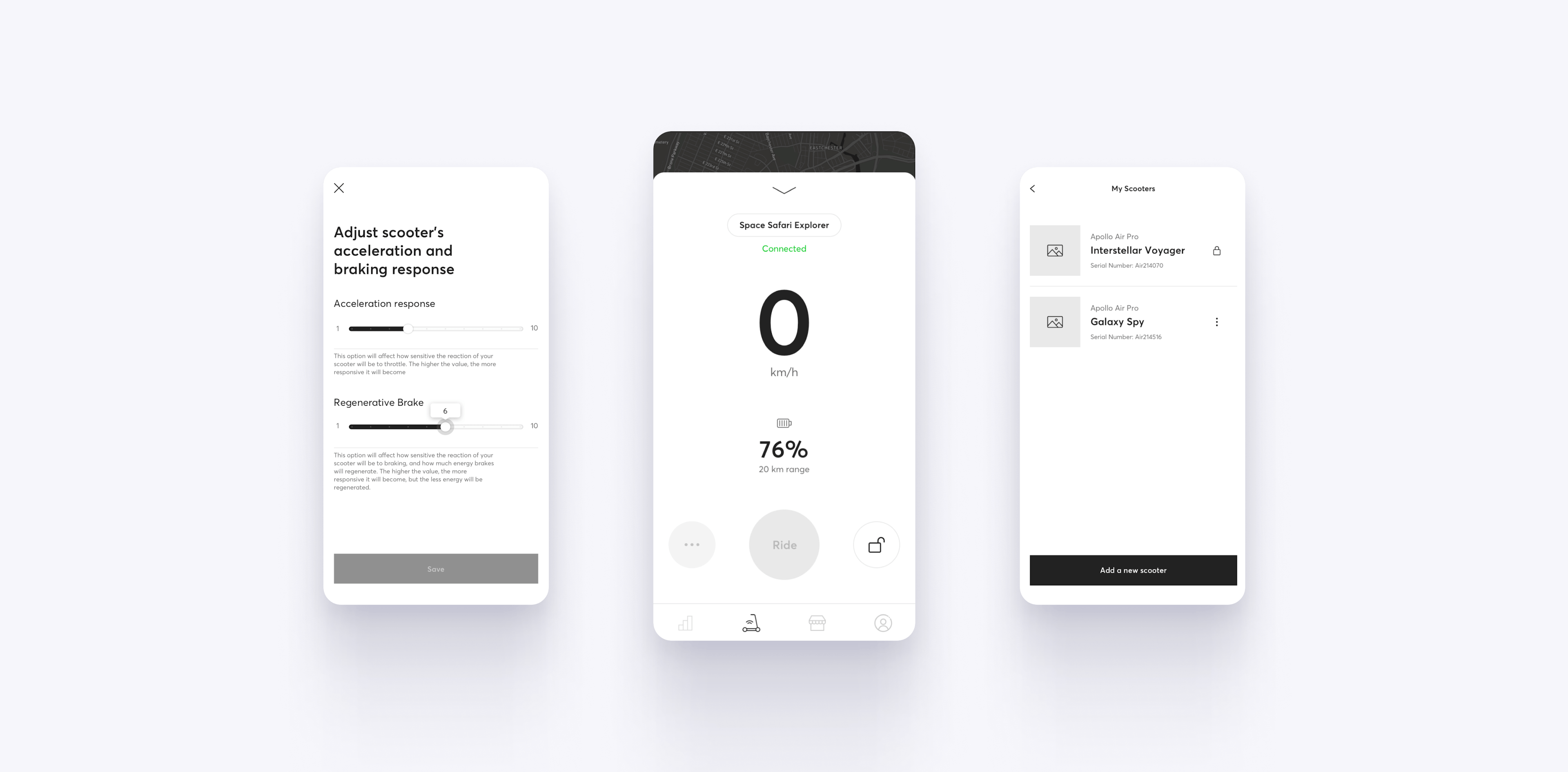Aside from stepping in a puddle, there’s nothing more annoying than flailing about trying to find the search bar on a poorly-designed website. UX research could've easily prevented that.
It’s probably true that the designers of these clunky websites knew where the search bar was located. After all, they built the site and the whole thing made perfect sense to them. But that is precisely the problem with many modern sites. The layout made sense to the site designer, but it doesn't make sense to its users. No one researched what the average user might do when navigating the site.
Building an intuitive site is both a science and an art. The first websites were often giant and unreadable walls of text that appeared on a single page. If you were lucky, there was a handful of buttons that might have included a search bar somewhere at the top.
Since those early days of the internet, lots of lessons about “user experience,” or UX, have been learned. One of those lessons is that a poorly-designed website can directly impact the revenue generation potential of a business. Bad UX often had a single, dangerous outcome: if a person can’t find a product on a website, how can they be expected to buy it?
The invention of the “hamburger” drop-down menu button was a game changer for UX. It universalized where people could find more options. People responded well to this innovation and website designers started to notice. They realized that clean and intuitive UX can make the difference between a good product and a great product.
To understand why, it is important to drill into what UX is.
What Is UX Research?
UX research is a critical component of the human-centered design process. It involves gathering qualitative and quantitative data through observation techniques, user interviews, surveys, usability testing, A/B testing, and user testing. The goal is to understand user behaviors, preferences, and pain points to create products that genuinely meet their needs.
The importance of UX research cannot be overstated when it comes to designing user-friendly products. User research is the backbone of creating digital products that resonate with users. A well-researched UX strategy transforms a good product into a great one by addressing user preferences, user expectations, pain points, and behaviors. From intuitive navigation to seamless interactions, user research ensures a product is not only functional but also enjoyable to use.

UX research is about making meaningful design decisions based on solid data. We create wireframes like these to convey the logic behind the product’s functionalities. As a sort of blueprint, these help us get better feedback faster and are great at communicating design changes. Pictured is an actual design wireframe from the Apollo Mobile App project, made by Adchitects.
Read more: What are UX/UI wireframes and why do we make them?
The Role of UX Research in Design
User research bridges the gap between what companies think users want and what users actually need. A UX designer plays a vital role in leveraging UX research to close this gap, fostering empathy for users while effectively communicating the importance of user research throughout the design process. It prevents assumptions from driving design decisions, ensuring that products are functional, accessible, and user-friendly.
Key UX Research Methods
UX research incorporates various methodologies to collect valuable insights, ensuring that products align with user needs and business objectives. By leveraging different research techniques, UX professionals can refine usability, enhance engagement, and create data-driven designs. Below are some essential UX research methods:
- User Research Methods – A combination of techniques for comprehensive insights.
- User Interviews – Collects insights about user behavior and preferences.
- Surveys & Questionnaires – Gathers quantitative data from a broad audience.
- Usability Testing – Observes users interacting with a product to identify usability issues.
- A/B Testing – Compares variations of a product to determine which performs better.
- Tree Testing – Helps assess how users navigate a website’s structure.
- Focus Groups – Engages multiple participants to gather diverse perspectives.
- Moderated Research – Facilitates user sessions with guidance from a UX researcher.
- Unmoderated Research – Allows users to test products independently.
- Different Research Methods – Utilizes multiple techniques for deeper insights.
Types of Research
In UX design, we use various types of research to get to know our users better and better. Each type of research plays a role in understanding and improving the user experience.
- Qualitative Research: This type of research is all about non-numerical data to understand user opinions, attitudes and behaviours. User interviews, usability testing and focus groups are common methods used. These allow us to dig deep into the motivations and pain points of users and get rich, detailed insights to inform the design process.
- Quantitative Research: Unlike qualitative research, this method is all about numerical data. Surveys, A/B testing and analytics analysis are typical methods used to collect data on user preferences, expectations and behaviours. Quantitative research gives us measurable data to spot trends and patterns and make data-driven design decisions.
- Mixed-Methods Research: Combining both qualitative and quantitative research methods, mixed-methods research gives us a more holistic view of the user experience. By combining the strengths of both approaches, we can get a complete picture of user needs and behaviours and make more informed and effective design decisions.
- Generative Research: This type of research is to uncover new design opportunities by exploring user needs, behaviours and motivations. Generative research is often done early in the design process to inspire new technology and solutions to unmet user needs.
- Evaluative Research: Focused on measuring the effectiveness of a design solution, evaluative research collects data on user performance, satisfaction and preferences. This type of research is critical in validating design decisions and making sure the final product meets user expectations and delivers a good user experience.
By using these different research methods, we can create products that are functional and user-centric.
Why UX Research Matters
Great user experiences don’t happen by chance - they’re built on a deep understanding of real people. UX research helps businesses see their products through the eyes of their users, uncovering pain points, needs, and behaviors that might otherwise go unnoticed. When companies take the time to listen and learn, they create products that feel intuitive, enjoyable, and genuinely useful. Investing in UX research not only leads to happier customers but also boosts retention, conversion rates, and long-term success. Simply put, great design starts with great research.
Focusing on UX design means a company will be able to better understand its customers. This involves testing, gathering feedback, and fostering a user-first culture to reduce all kinds of costs. Few people are better placed to discuss why good UX matters than the inventor of the term, Don Norman, who once explained the way UX should try to fulfill a user’s needs by building a better customer satisfaction–conversion–retention journey.
“No product is an island. A product is more than the product. It is a cohesive, integrated set of experiences. Think through all of the stages of a product or service — from initial intentions through final reflections, from the first usage to help, service, and maintenance. Make them all work together seamlessly.” — Norman said.
The Business Impact of Good UX
And there’s good data backing up Norman’s sentiment.
For example, according to Spiralytics, every dollar invested in building good UX brings a return of $100. That’s an impressive ROI of 9900%. On top of that, 72% of customers will tell six other people about a good user experience. Obviously, not every company will achieve similar returns, but gaining even a fraction of this success could drastically improve the bottom line.
A 2016 design study of 408 different companies found that when a company invested in design, sales tended to increase, customers stuck around, and its employees moved through product cycles faster. The crucial factor here was good UX design and putting the customer at the heart of the business.
Furthermore, Forrester Research showed that a well-designed user interface can increase the conversion rate of a website by up to 200% by making it easier for visitors to find what they’re looking for.
Check out: Redesign this page first to double your e-commerce conversion rate!
Advantages of UX research
Conducting research to understand who a company’s customers are, what problems they face, and how they prefer to interact with you are all key parts of designing a great website. Research by IBM found that the cost of correcting a mistake after a product hits the market can be up to five times more expensive than planning correctly during the design phase.
Virgin America, now part of Alaska Airlines, understood this when it set out to redesign the UX of its website in 2014. The most important addition to the company’s updated site was a full-screen single-scroll booking system which meant users could book flights twice as quickly as before and move faster to the checkout to purchase a ticket.
As a result, the airline’s incredibly responsive website generated a 14% increase in conversion rates and a 20% decrease in complaints or queries to customer service. After two successful quarters, largely due to the success of the website, Virgin America was able to launch an IPO. Its hard work researching what customers really wanted certainly paid off.
UX research allows a company to make better decisions based on data, not guesswork. As the wise understand, the only way to create a solution is to recognize how little each of us knows about what others want. Website designers least of all should never assume they know how other people go about their daily struggles and what their habits are.
Research starts with setting clear goals and asking the right questions. Only then can a design team decide on the methods of achieving those goals, such as surveys, interviews, analytics, tests, or many other techniques.
Once the research goals are understood, the next step is to learn who the target audience actually is and identify some of the characteristics of the average user and what they might need the site to do.
An experienced digital transformation agency will bring the value of working with a portfolio of clients from a range of sectors which means they can design and develop a website for all kinds of users. For example, a project for helping teachers in the classroom will require a deep understanding of the average teacher’s lifestyle, pain points, and goals. A solution for one niche may not be a suitable fit for another niche.
It’s the job of the project manager to keep this research on track. The design team is responsible for defining the end value of a website, thinking through its potential features, and understanding the logic that will govern the site. But every member of the design team has a role to play in creating the best possible UX – from the visual designer to the developers and even the testers.
Once a design plan is in place and a basic site functionality has been created, the site can then be tested with real users to see how they naturally interact with it and if there are glaring problems that need fixing.

A world-class UX design should reflect and address the user's expectations and needs. UX researchers will analyze your product’s target market, giving you the opportunity to verify your perception of your users. This also greatly helps pinpoint current design trends. Pictured is the Victoria Mobile App, made by Adchitects.
Key Principles of Effective UX Research
Build Empathy for Users
Understanding users’ emotions, motivations, and challenges is essential for creating products they love. Conducting user interviews and observational research helps UX designers understand user expectations and make informed design decisions.
Identify Exact User Problems
User research uncovers pain points that might not be obvious. Without research, design improvements become a guessing game. Prioritizing user needs ensures that a product aligns with customer expectations and solves real problems.
Implement Data-Driven Decision Making
By combining qualitative insights (user interviews, user feedback) with quantitative data (heatmaps, analytics, A/B testing), companies can make strategic design choices that improve usability and engagement.
Iterate and Conduct Usability Testing Frequently
UX design is an iterative process. Regular usability testing, unmoderated research, and feedback loops ensure continuous improvement and help designers refine their products over time.
How UX Research Enhances Product Development
UX Research and Wireframing
Wireframing is a vital step in UX design that allows teams to visualize the product’s structure before development. It serves as a blueprint that ensures logical navigation and usability.
UX Research for Conversion Rate Optimization (CRO)
- A data-driven UX approach helps optimize user flows for higher conversion rates.
- Reducing friction in user journeys improves completion rates.
- Clear CTAs (Call-to-Action) increase engagement and guide users toward conversions.
- Mobile optimization enhances accessibility for a broader audience.
Conducting User Interviews for Better UX
What Are User Interviews?
User interviews involve directly speaking with target users to gain deep insights into their behaviors, needs, and frustrations. They can be:
- Structured – Predefined questions for consistent data.
- Unstructured – Open-ended discussions for exploratory insights.
- Remote or In-Person – Depending on user accessibility.
Benefits of User Interviews
- Reveals pain points and opportunities.
- Provides actionable insights beyond analytics.
- Improves product decisions based on real user feedback.
The UX Research Process
The UX research process is a structured approach that involves several stages, each critical to understanding and improving the user experience. Let’s explore these stages in detail.
Planning and Preparation
Effective UX research begins with thorough planning and preparation. This stage sets the foundation for a successful research project.
- Defining Research Goals and Objectives: The first step is to identify the research questions and objectives. What do you want to learn from the research? Defining clear goals helps in determining the scope of the research project and ensures that the research efforts are focused and aligned with the overall design process.
- Developing a Research Plan: Once the goals are set, the next step is to create a detailed research plan. This plan outlines the research methods to be used, the timeline for the project, and the resources required. A well-structured plan ensures that the research is conducted systematically and efficiently.
- Recruiting Participants: Identifying and recruiting participants who meet the target user criteria is crucial for gathering relevant data. Whether through user interviews, usability testing, or surveys, having the right participants ensures that the insights gathered are representative of the actual user base.
Conducting Research
With the planning in place, the next stage involves conducting the research to gather valuable data.
- Conducting User Interviews: User interviews are a powerful method for gaining deep insights into user behaviors, needs, and frustrations. These interviews can be conducted in-person or remotely, depending on the accessibility of the participants. The qualitative data gathered from these interviews provides a nuanced understanding of the user experience.
- Conducting Usability Testing: Usability testing involves observing users as they interact with a product to identify any usability issues. This method helps in understanding how users navigate and use the product, highlighting areas for improvement. Usability tests can be conducted in-person or remotely, providing flexibility in gathering user feedback.
- Conducting Surveys and Questionnaires: Surveys and questionnaires are effective tools for gathering quantitative data on user preferences, expectations, and behaviors. These methods can reach a broad audience, providing valuable insights that can be used to inform design decisions.
Analyzing and Interpreting Data
The final stage of the UX research process involves analyzing and interpreting the data collected during the research.
- Analyzing Qualitative Data: Qualitative data, such as user opinions, attitudes, and behaviors, is analyzed to identify common themes and insights. This analysis helps in understanding the underlying motivations and pain points of users, guiding the design process.
- Analyzing Quantitative Data: Quantitative data, such as user preferences, expectations, and behaviors, is analyzed to identify trends and patterns. This data-driven approach provides measurable insights that can be used to make informed design decisions.
- Drawing Conclusions and Making Recommendations: Based on the research findings, conclusions are drawn, and recommendations for design improvements are made. These recommendations are crucial for refining the product and ensuring that it meets user needs and expectations.
By following a structured UX research process, UX designers can create products that deliver exceptional user experiences, driving engagement and business success.
The Role of UX Research in Internal Linking and SEO
UX research not only enhances usability but also strengthens a website’s internal linking structure, which is crucial for SEO. By understanding user navigation patterns, designers can strategically place internal links to improve:
- Site structure and crawlability
- User engagement and session duration
- Relevance of linked content to search intent
Example:
If a UX research study identifies common pain points, linking to case studies, blog posts, or tutorials can keep users engaged and drive traffic to high-value pages.
Conclusion: Why UX Research Is Essential for Success
UX research is not just an optional step in product development - it is the foundation of creating digital experiences that delight users and drive business results. By investing in research-driven design, companies can:
✅ Improve usability and accessibility
✅ Enhance customer satisfaction and retention
✅ Increase conversions and revenue
✅ Strengthen brand credibility and loyalty
Get your UX right with Adchitects!
How do you increase your company's or business' effectiveness? How about having your website or app go through a comprehensive, data-based UX research & redesign transformation aimed at boosting your conversions and visibility? At Adchitects, we can take care of it.
We offer a simple and effective way to create digital products that you will fall in love with. We've already worked with plenty of industries, including e-commerce, fintech, retail, SaaS, education, and more. What's more, our creative and development processes are fully transparent, so you will always get what you need. We guarantee that your website will never go offline, and we’ll advise you on what steps to take to make your website a success.
Contact us today, and let's build your new digital presence together.




















